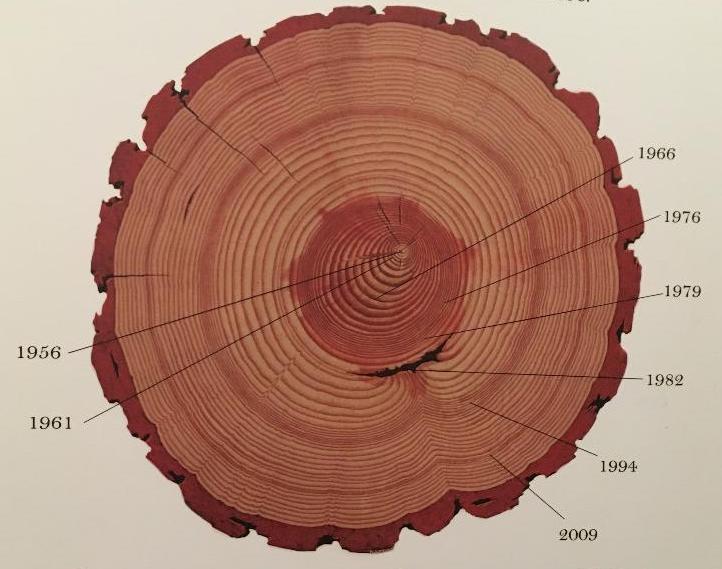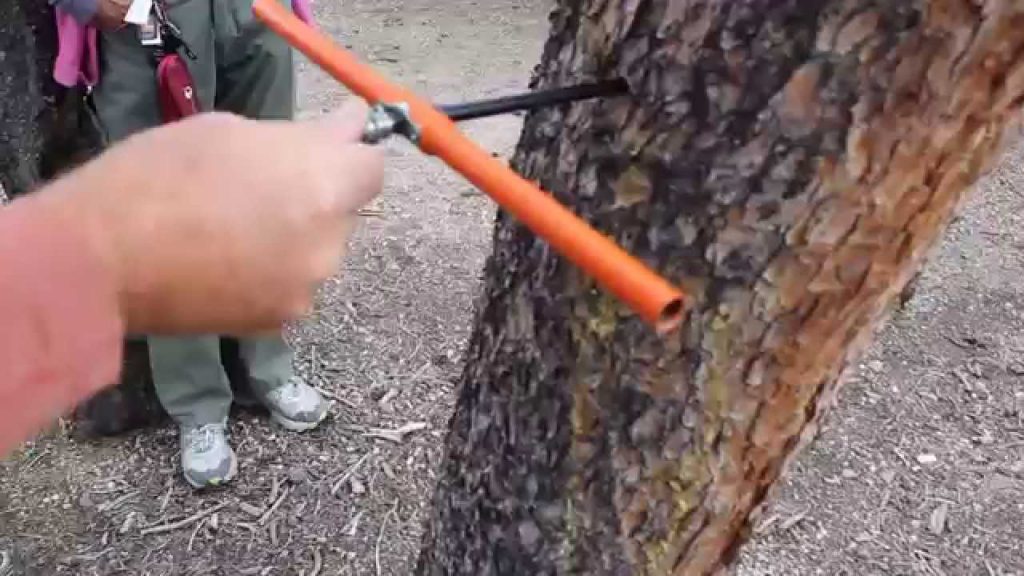How Old Is That Tree?
People are always interested in how old a tree is, and there are at least four ways to arrive at an estimate.
First, as is commonly known, if the tree is dead and has been cut down, you can count the rings on a cross-section of the stump. Trees — except for palms and many trees in the tropics — produce a new growth ring each year. This is the method that can tell us, for example, that a given Giant Sequoia (Sequoiadendron giganteum) was, say, 2,520 years old when it died.
Second, you can extract a core from the tree’s trunk using an increment borer and then count the rings that are revealed. This method, however, can injure the tree. Unless you’re an arborist, don’t do this.
Third, you can sometimes uncover information about when the tree was planted or proof that it was alive at a particular year in the past. At Mount Vernon, a White Mulberry (Morus alba) planted by George Washington in 1785 (as revealed by Mr. Washington’s diary) was still alive in 2018 and thus 233 years old. Locally, the Stull Bald Cypresses in Willow Street (see entry) were seedlings handed out at the 1893 Chicago World’s Fair those 125 years ago. And there is a photograph taken in 1896 at the Hans Herr complex in Willow Street, showing a newly planted magnolia which still thrives today; that tree is 122 years old plus a few years for age-when-planted.
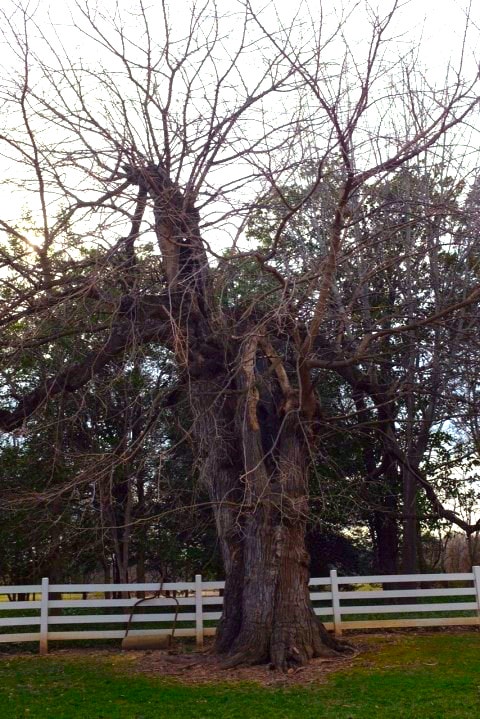
Fourth, you can use a formula that the International Society of Arboriculture devised to roughly esti- mate the age of a living tree. To use this formula, first measure the trunk circumference in inches at a height of 4.5 feet above the ground. Then divide this number by pi (3.14) to get the”diameter at breast height” or DBH. Then multiply the diameter by the species-specific growth rate factor (GRF) for the tree that you obtain from arborist charts, as easily googled.
In short, age estimated by this fourth method equals DBH X GRF. As an example, the huge Northern Red Oak (Quercus rubra) in Drumore’s Ferncliff Nature Preserve, now fallen, had a circumference of 222 inches. And the GRF for Red Oaks is 4.0. So the estimated age of this giant when it fell was: (a) 222 divided by 3.14 = 70.7; and (b) 70.7 X 4 = about 280 years.
This formula is easy and fun to use, and gives a general idea of age in cases where a person might otherwise be clueless. But a number of caveats should be noted. For one thing, 4.5 feet above the ground is an arbitrary height at which to measure the circumference or diameter of a tree. There are three nice Paulownia tomentosa (Lancaster’s Three Princesses) side-by-side near the entrance of Perelman Park (1996 Landis Valley Road), and the three trees are obviously all the same age. One tree is single trunked and has a circumference at breast height of 5.5 feet. Another of the three, however, has multiple, co-dominant trunks that separate at about 1 foot above the ground. The circumference of this second tree at 1 foot (before the split) is over 10 feet….almost twice that of its compatriot even though both trees are the same age. Arborists have ways for dealing with this problem but my point is that multi-trunk trees have to be treated differently than single-trunk trees when using the age formula.
Furthermore, tree growth is affected not only by genetics (as reflected in the GRF) but also by local site and climatic conditions; the tree’s age (younger trees grow faster than older); competition from nearby trees; water, nutrient and light availability; tree health and more.
The ISA formula was derived for trees growing in a forest environment. In contrast, street and land- scape trees are pampered, protected and competition-free, and thus generally grow faster than forest trees….which means the ISA formula often overestimates the ages of town trees. As one ex- ample, the Japanese Zelkova (Zelkova serrata) growing in a yard on Lancaster’s South Duke Street gives a formula-based estimate of about 200 years. Yet Zelkova were not even introduced to Ameri- ca until 1862, 156 years ago. So the formula as applied to this yard tree is obviously wrong.
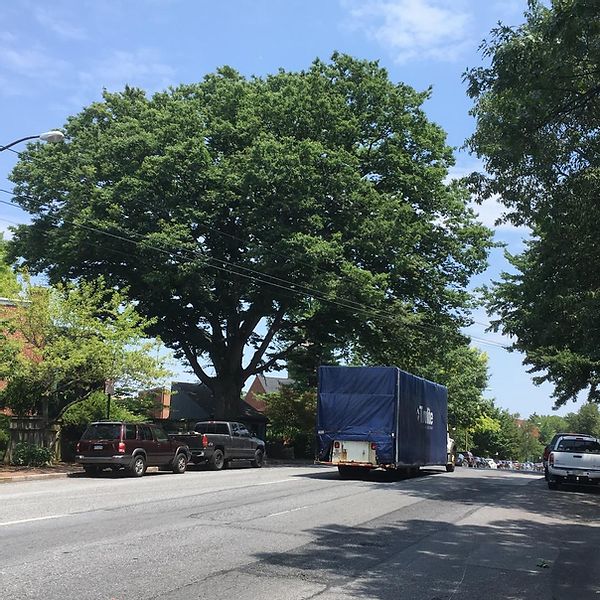
In almost all cases where careful study of very large trees have been made, age estimates previously claimed by enthusiastic boosters (like myself upon occasion) have had to be substantially reduced. Still, with a little correction (forest vs. landscape, etc.), the formula can give ballpark estimates.
Some of the above aging methods cannot be utilized with certain trees. As already noted, palm trees do not generate annual rings in their trunks so “ring counting” and “coring” cannot be em- ployed (see Tree Treasures Guidelines regarding whether palm trees are really trees). The same is true for many tropical trees.
Secondly, neither ring counting, coring or the ASA formula can be applied to coppiced trees (e.g., the old White Ash at Lancaster’s Worthington Square Development). In coppicing, a tree trunk that is cut close to the ground later sends up fresh shoots which eventually mature as new trunks. Regularly coppiced trees are in a perpetual juvenile state and never die of old age. This means that with a repeatedly coppiced tree, the trunk(s) will be one age while the roots are much older. Britain’s Westonbirt Arboretum has a Lime Tree (Tilia cordata….known in America as the Little Leaf Linden) whose above-ground age is less than 50 years while the plant itself is 1,000-2,000.
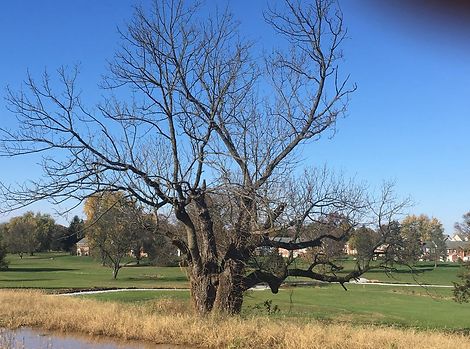
Even father outside the norm are clonal tree colonies. In this case a grove of trees appears to be composed of distinct individuals but is in fact a clump of trunks sprouting from the same root system. Over time, some trunks die while others sprout anew, and the same root system just goes on and on. For example, a colony of 47,000 Quaking Aspen (Populus tremuloides) in Utah has “individual trees” that are about 130 years old while the plant’s root system is thought to be — get this! — 80,000 years old. This plant, a male, is so special that it even has its own name: Pando.

